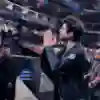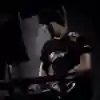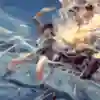Gaming
It’s an exciting time to be a Valorant fan right now. After a fantastic launch period, the development team has now had time to really work on some game-changing new content, and Act Three is set to deliver once again. Already the fifth map in Valorant, Icebox, has launched months earlier than planned, and soon the 13th agent, Skye, will also grace the servers.
As you would expect with these massive additions to Valorant, there is a lot that will shift, and while Icebox is already playable, when Skye rolls around things will change once again. The staggered launch is designed to give people a chance to figure out the new map before the new agent comes in and creates even more uncertainty on how to play, but even that doesn’t reduce the stress of having to learn a new map when seemingly everyone you play against is already an expert on it.
Fortunately, some of the biggest names in Valorant have already been hands-on with both major new additions at the same time, and we got them to give us their secrets – including Lucas ‘Hitbox’ Gonzalez-Sabariegos, Valorant Coach for the Vodafone Giants.
“I personally have been playing close to 20 years of Counter-Strike and I’m amazed by the design of the maps in this game,” says Hitbox. “Every one of them is a unique proposal strategically speaking. This map presents a few features that make it unique. Maybe what I’m most eager to see is how tier one teams play out IceBox. The metagame is still to be determined in this map. What I can say is that I am fascinated by the design and I’m anxious about how teams will face the challenge.”
With Icebox already live in unranked matches and due to hit ranked when Skye launches, getting up to speed with how the map works is critical. On paper it may look like one of the more traditional, and as a result easier to figure out, maps in Valorant with two sites and three lanes. But there are a lot of subtle differences that may take time to figure out for us normal players.
“This map’s differentiation lies on both sites being particularly big, and for this, most of the team fights or aggressions will happen inside them,” says Hitbox. “In other words, the conflict zones are mostly inside the sites and that is something strange to see. I believe it’s a map with very peculiar mechanics. We only have to set our eyes on mid’s width and the amplitude of both sites. It’s a map that pursues that fights between both teams occur inside the sites.”
The sites on Icebox are unique. The large open spaces on both of them are the main talking point, but both sites also have a lot of verticality. With ropes to climb up to higher areas, and other ledges to give you a vantage point over the site you’re going to need to think about more than just those foes on the ground.
“It's a map with loads of verticality,” says Hitbox. “In fact, it's the one with the most verticality. It’s also a map that allows a lot of boosts, so those agents that can self-boost (like Omen, Jett or Raze) will have an advantage over the rest, due to the nature of their abilities. I believe this is positive for the game because it promotes a variety of setups, meaning we won’t get to see the same five agents constantly between maps. I do like the dynamic this introduces, where depending on the map, some agents could shine over others. I think this is the path in which the game should continue.”
The sites on Icebox are what everyone is talking about, with the massive verticality changes and completely different styles. But being somewhat overlooked is the compact mid area, that offers pathways to both sites and so should be a top priority for players. But thanks to its compact nature, with only one real route through and limited cover it can be an incredibly difficult part of the map for attackers to do anything on.
“I believe that, even though there will be fights in mid, the real team fights won’t be occurring there, or at least they shouldn’t,” says Hitbox. “We shouldn’t forget that the middle of the map is a more close-quarter area and with a bottle-neck effect. This implies that any ability coming from the defender team will have a critical impact: from a flashbang to a smoke or a damage-based ability. In other words, the defender can neutralize with relative ease the advance of an attacking stack using a poor amount of abilities. This is why it’s not worth it for the attacking team to use many agents to take mid control.
“This does not imply the attackers will give away mid control, but the attack of this area will be a little more paused and used as a lurking zone, to allow splits to one of the sites and intercept defender rotations. Honestly, I believe that with how the map is set, fights will occur mainly on the plant sites. They are sites very accommodated for fights due to their amplitude and verticality.”
Of course, as soon as Icebox hits the ranked queue, and then the professional scene two weeks later, we will have a much better idea on how the pros intend to play this map. As the coach for the Vodafone Giants he will be trying to figure out all of the secrets and best strategies the map has to offer, and learning from his initial thoughts will be crucial for dominating the map when it launches in the ranked mode.
When Skye launches that will of course throw in even more change to the game, but that is what Valorant fans have been calling for, and while a ton of new content may make his job even harder, Hitbox is fully on board with the changes that Riot is making to Valorant with Act Three.
“I’m very happy about everything they have prepared for Act Three, says Hitbox. “We’re talking about dozens of corrections that the community have been asking for in the last few weeks, from agent to game mode changes, as well as ranked tweaks. They have also pushed forward the new map launch date due to the situation of the competitive scene. They’re doing things very well.”












